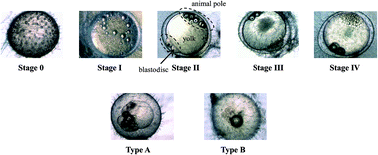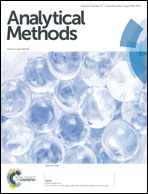Discrimination of fish egg quality and viability by Raman spectroscopy
Abstract
Egg or embryo quality is typically assessed by viewing the egg morphology and by observing the cleavage rate of the embryo. Assessment of egg or embryo quality based on bio-molecular information might lead to improved outcomes for aquaculture or in vitro fertilization (IVF) treatments. To assess the egg quality, we performed Raman spectroscopy on fish eggs from the Japanese medaka (Oryzias latipes). Good classification results from the yolk were obtained using principal component analysis (PCA) and linear discrimination analysis (LDA). The results show that the supply of oil energy starts immediately after fertilization and embryogenesis is initiated. The presence or absence of fertilization can be evaluated by fatty acid Raman bands with 95.7% accuracy. The Raman results show that the key factors that indicate the viability of fish eggs are amino acid production and carotenoid pigment deposition. The LDA algorithm based on the Raman bands of these substances indicates whether the development is normal or abnormal with 80.3% accuracy. These results show that Raman spectroscopy can be a powerful tool for non-invasive assessment and real time monitoring of fish egg quality and viability.


 Please wait while we load your content...
Please wait while we load your content...